The 50 States Project is a series of candid conversations with interior designers across the country about how they’ve built their businesses. This week, designer Sarah Storms of Maplewood, New Jersey–based Styled by Storms tells us why she finds personal fulfillment in professional relationships, why she’s OK with designing one room at a time when needed, and how her three young sons inspire her to dream big.
What was your path into the design industry?
I remember very vividly that on days when I was tired or didn’t want to go to school, my mom would say to me: “Let’s put on your favorite outfit and do your hair. Once you are looking good, you’ll start feeling good.” I think that was the beginning of “faking it until you make it” for me—and when you’re in a creative industry, I feel like you’re kind of faking it for most of your career. As soon as you feel like you’ve got a hold on something, you start trying to explore the next thing.
Right—there’s that constant “What’s next?”
Yes! I always knew that I wanted to be in a creative industry, but I also knew I wasn’t cut out to be a starving artist. At my core, security is so important to me. I went to James Madison University, where I played basketball my freshman year. When I was looking at schools, they offered a fashion minor; when I got there, they had dropped it, and the closest thing I could find was a marketing major. It was really a struggle that first year. I loved the school so much and wanted to stay, so I quit playing basketball and enrolled in the art school. I stayed for the June session that year and took a live drawing class, and it was magical. At the end, that professor wrote my recommendation letter.
How did pivoting to art change your college experience?
Everything clicked. School wasn’t so hard anymore, and I really enjoyed what I was doing. As part of the fine arts degree, there was an interior design and interior architecture concentration, so that’s what I went into. I studied in Vienna between my junior and senior years—we learned for a couple hours in the morning, then in the afternoons went and saw everything we had learned about, and it was probably the closest thing I have to a life-changing event where your perspective really shifts. It changed how I find inspiration, how I harness those visceral feelings when you react to something and link it to your real life. I was 21, and those three months were amazing—and now that I think about it, it’s probably the one time in my life where I really let myself be scared.
You mentioned that security was always a priority for you. How did that shape your career path?
I was pretty dead-set on going to architecture school after college at the time. But in Vienna, there was a grumpy old architect who was like, “Oh, you won’t make any money in this field until you’re in your 60s.” Had I not been such a naive 21-year-old, it probably wouldn’t have changed my path, but it freaked me out. I decided that fashion felt like a safer bet, so I moved to Los Angeles after graduation and did a one-year program at the Fashion Institute of Design & Merchandising for merchandising and product development.
It was a great experience, and taught you everything you needed to know for daily practical use. You could actually get a job at the end of that school program. And while I was there, I worked for a glass artist named Alison Berger. She’s crazy-famous now, but I was her first assistant.
Oh, I love her work!
She’s incredible. She had worked for Frank Gehry, who was my architecture hero—he still is, but he especially was [when I was] in school. In my initial interview with Alison, we talked for two hours about art and architecture. She taught me how to write a business email—this was in 2002, so emails were still kind of novel. I would make sure that all of the bills got paid. I would pack up shipments to go out. We would go to the glass studio in East Los Angeles and I would do quality assurance inspections.
My responsibilities with her grew and grew. An art museum in the Southwest was going to buy some pieces of her barware collection for [its] store, so I did the window merchandising plan, then [figured out] how we could reset it if they sold it down. She had been doing a huge installation for a home where the clients wanted some additional pieces; she knew she wanted to do these interesting square sconces, so she asked me if I could give her some initial ideas for the rest of the components that she could then perfect. I worked with a metal artist to create [them], which was an amazing real product development experience. It was also quick—this magical 14 months. She offered me a full-time job when I was done with school, and I just was too homesick to stay on the West Coast. But she is a big part of my story.

Did those experiences help you understand what you wanted to do when you got back to the East Coast?
Deep down, I always knew that was it. But at the same time, I had just decided I was going to be in fashion a year before, and I had spent all this money [to get that degree], so I was like, “I’m going to do it.” I’m a pretty goal-oriented person, but I kind of had blinders on. I was going to live in New York and do this fashion thing—why would I let some amazing experience sway me? And so I came back and ended up being in luxury fashion for 20 years.
I had a couple jobs at smaller licensing companies, then worked at PVH doing Izod knits for two and a half years. I worked at another company where I was doing product development and merchandising, leading fittings, setting the showroom—one of those small companies where you do everything. Then I started working for Ralph Lauren in 2007, which is where I had always wanted to be. My initial position there wasn’t exactly what I wanted to do, but it got me in the door, and I was able to pivot about a year later into a product development job in women’s Black Label knits. I was working on fabric development and color development with the design team. Color is one of my strongest suits. I see color really well. I see undertones of color really well. Part of that is a natural talent, but it was also honed from my 13 years at Ralph Lauren—by the end, I was in charge of product development for Purple Label knits and sweaters.
How are you working with color in that role?
You have a color that is the color standard for everything, but you’re working with all of these different fibers, and everything dyes differently. You have to understand how certain fibers flare in certain color tones and how to correct those colors so that, in the end, your showroom looks cohesive—your cotton T-shirts look like your cashmere sweaters or your wool gabardine suits.
What made you start thinking about pivoting to interiors?
After a few years at Ralph Lauren, I started feeling like I wanted more creativity. I looked into getting my master’s degree in interior design at Pratt Institute in Brooklyn. I had started the application process, and my husband and I were looking at apartments in the neighborhood—when I found out I was pregnant with my first son. It was kind of like, “OK, you cannot go to art school,” so I knew I had to figure out how to change my [existing] job so that I felt creatively fulfilled. That’s when I started bringing ideas to the table for silhouette changes. I already had a reputation for making things happen, so I decided to confidently step into an area that might not have technically been part of my job and convinced everybody that I should’ve been there all along.
I have three boys—a 10-year-old and 7-year-old twins. After I came back from having my twins, I was only doing men’s Purple Label, and we ended up tripling the size of the line. There had been some leadership changes and layoffs, and I was able to step into a real leadership role and become the true counterpart to my lead designer. We traveled all over the world together to shows and factories—it was a really great few years at the end of my career there. Then Covid happened, and everybody’s plans changed.
What did that mean for you?
I ended up parting ways with the company in October 2020. I was a little heartbroken, to be honest with you. But it was also like, “OK, here I am: I’m 40 years old. What am I going to do?” I love my kids, but I’m not cut out to be a stay-at-home mom. I need to be creative. I went to lunch with one of my girlfriends and she was like, “Sarah, for as long as I’ve known you, you talk so passionately about interiors, and you see color in ways that I don’t understand. I really think that you should try interior design. What’s the worst that’s going to happen?” And my husband was kind of the same way. He was like, “I think this is your calling. We’ve talked about this for years.”
I met some Realtors in town, and one of them recommended me for my first job. I did a bunch of stuff for my girlfriends in order to get photos. A couple recommendations in the beginning started leading to some other projects—and then once I had a little bit of photography and a few people to take a chance on me, things exploded quickly.
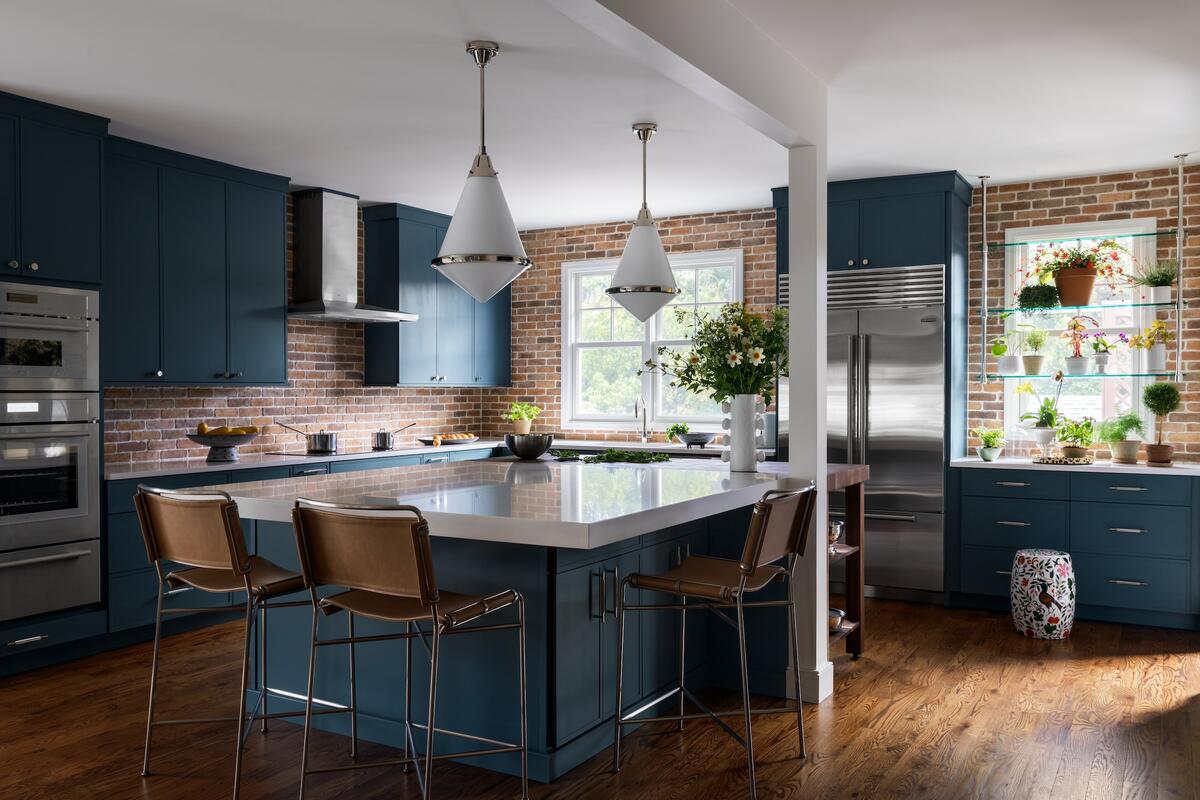
What surprised you about the work?
The interesting part is that all of the things I do now are exactly what I did in fashion: I build collections. It’s the conceptual work of creating a mood, a vignette, what speaks to you; creating a color palette. You’re asking the same questions: What’s the showstopping element? What are the supporting pieces? You need to have some quiet pieces to really lift up other things. So the design aspect of it was very natural. It was trying to figure out how to run a business that was more difficult. I never thought I wanted to be an entrepreneur, but here I am.
What were the biggest hurdles in establishing the business?
The financial part was really a challenge at the beginning because I just had one pot of money for everything—purchases, operation expenses and taxes. I had enough to pay my bills, but I didn’t know what everything went to. I was able to hire a bookkeeper after that first year, who now helps manage all of [the finances] so I know exactly how much money is in my purchasing accounts and how much I have for operating expenses, and there is a whole savings account for taxes. There are no surprises anymore.
I’m also getting more systematic. I had come from such a corporate world, where everything was already incredibly systematized—everybody had their roles, and there was an established workflow [that dictated] how you managed each piece of it. Trying to come up with your own workflow is much more intimidating.
What helped you turn the corner on establishing those systems?
I was finally able to find the software that helped me understand everything that was involved in the project. I dabbled in a couple other ones, but now I use Studio Designer, which makes everything so black-and-white. You create your project, you create your room, and then you add everything that you’re going to be using within that project. You can put your pricing in. Your sales tax is accounted for, based on where this project is happening—all these little things that were a struggle to figure out when I was doing it all in Excel.
I’ve also recently started dabbling with Asana for task lists and project management, because I need to get things out of my brain so that people can actually help me. To be able to see the broader picture: Who are the clients we have active projects with right now? What phases are we in with those? What are the immediate things that need to be achieved so that they don’t fall off the timeline?
It sounds like you’re setting yourself up to make a hire.
I just brought on my first part-time project manager and operations person, and it’s going well. I’m hoping that can grow into more of a full-time role eventually, but for now it’s helping take certain things off my plate, like following up on emails, scheduling appointments, placing orders—all the things that just take time. If I’m in a design meeting, or I’m on vacation, or I’m at a trade show, or there’s an installation, or something happens and I need to go on-site, the rest of the work still has to keep moving along, and this team member can make that happen.
I have an office in my home that she comes to a couple days a week. It’s also nice because one of the things I miss most about my corporate life is my co-workers. I miss being able to go on my coffee runs, or running into somebody in the kitchen when you’re getting your lunch from the refrigerator, or shooting the breeze before a meeting starts. I’m a very social person, so it can be lonely being a one-woman show.
How does that show up in the way that you’ve built a network in the design industry in these last couple years?
Creating relationships is my strong suit. So when I started this business, I showed up. I’ve been to every single High Point Market since I started my business, and I wasn’t afraid to introduce myself to anybody. I went to every fabric showroom to get to know my vendors, because in fashion that was always my secret weapon—and I had such an extensive knowledge base from developing fabric that I knew all the questions to ask. And I was kind. I followed up with “Oh, it was nice to see you,” or “Thank you so much for your help.” A little bit of kindness goes a long way. And then I made sure that if I had made a relationship with a vendor at Market, I went back the next time to say, “It’s so good to see you again.”
It’s so important to really connect with people so that it’s a real-life relationship versus just a transactional one. I want to be able to have conversations so that I’m not always coming to somebody asking for a favor, or so that I’m not pitching a project every time I talk to an editor. Sometimes you really hit it off with somebody, but where they work and what you do doesn’t jibe—but it doesn’t mean you can’t be friends with them or have a working relationship with them. I just think that people and connection are so important to having a successful career. And not only a successful career, but personal fulfillment in your career.
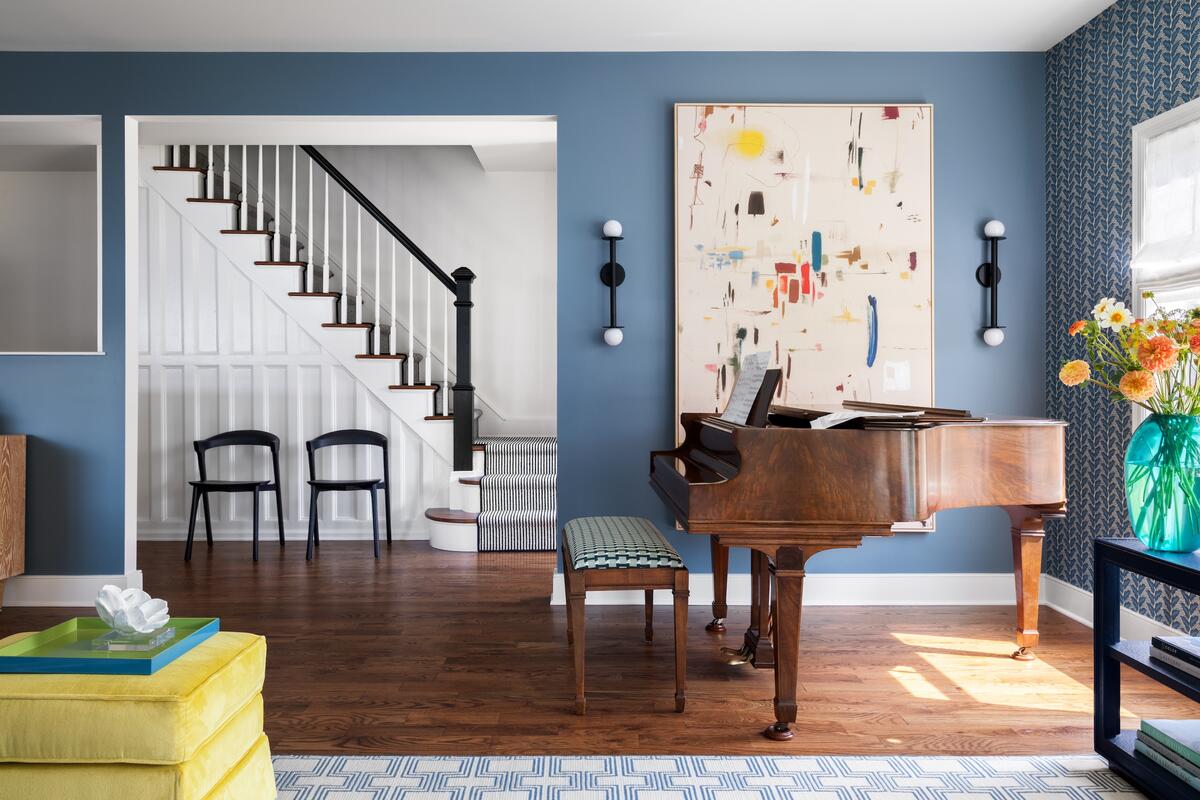
What does your workload look like today?
My first handful of clients have turned into big repeat clients. One of my very early clients—they were client number three when I consulted on their kitchen renovation in South Orange—moved full-time to their beach house on St. Simons Island in Georgia in 2021. We kept in touch, and then started working on that project together. We’re putting a 4,000-square-foot addition on their existing house, which is definitely the largest project I’ve done to date, and they are amazing clients.
I still do one-room projects—a lot of kitchens, living rooms, bedrooms—but really what it comes down to is, I want to work with people who are nice, are excited, and either don’t have any time or are nervous [about taking on the project themselves]. As much as I’d love to be able to do full houses, sometimes my clients do turn into full-house clients. Sometimes people need to make sure they can really trust you, and then it’s like, “Oh, yeah, she can do whatever she wants—do the whole thing.”
I think there’s truth to that idea of building trust, but I also think clients sometimes come in thinking, “This is the problem area of my home.” Then they live in the designed space, realize how transformed it is, and are like, “Wait, we want the rest to feel that good.” They don’t think they need the rest until you show them that they do.
I think that’s so perfectly said. It’s interesting: There was a living room that I did in Chatham where the client said, “I think I’m OK with this design stuff. I just don’t know what to do with this front room.” You walk right into it, there’s no foyer, nothing is symmetrical. And she was like, “I just don’t know what to do, so it’s empty.” I did the space, they loved it, and then she was like, “While you’re here, can we just add on this dining room that you see through here?” So now we’ve done a couple of spaces on the first floor—basically everything you can see from that front room.
But it’s also really nice to have clients who come back after a year or so—they love the space and they invested in it, and now they’ve saved up to do the next one. I have a minimum investment in order to do one room—really so that I feel like I can stand behind it, because I want to use hardworking, quality pieces that look amazing and [hold up to] real life. I’m not saying that you have to have a $30,000 silk rug, but I’m not going to buy you a crappy rug that’s going to be in a landfill in two years. I tell clients, “If you’re going to spend money, you should invest it wisely. I’d rather do one space with a larger budget so that it feels completely done.” But sometimes that means clients can’t do multiple rooms at once. And when they come back and say, “OK, we’re ready to do the next one”—that, to me, is the best compliment.
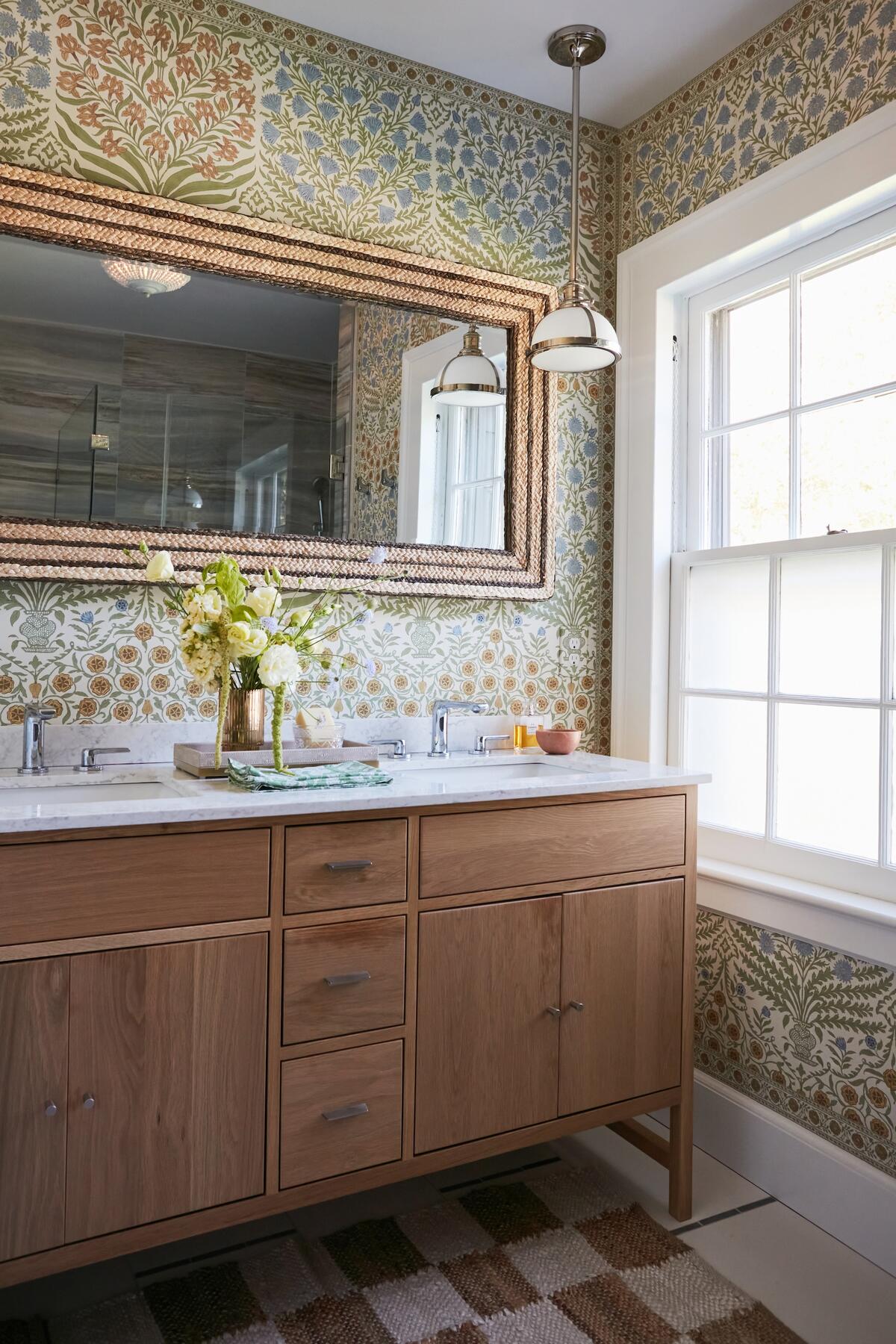
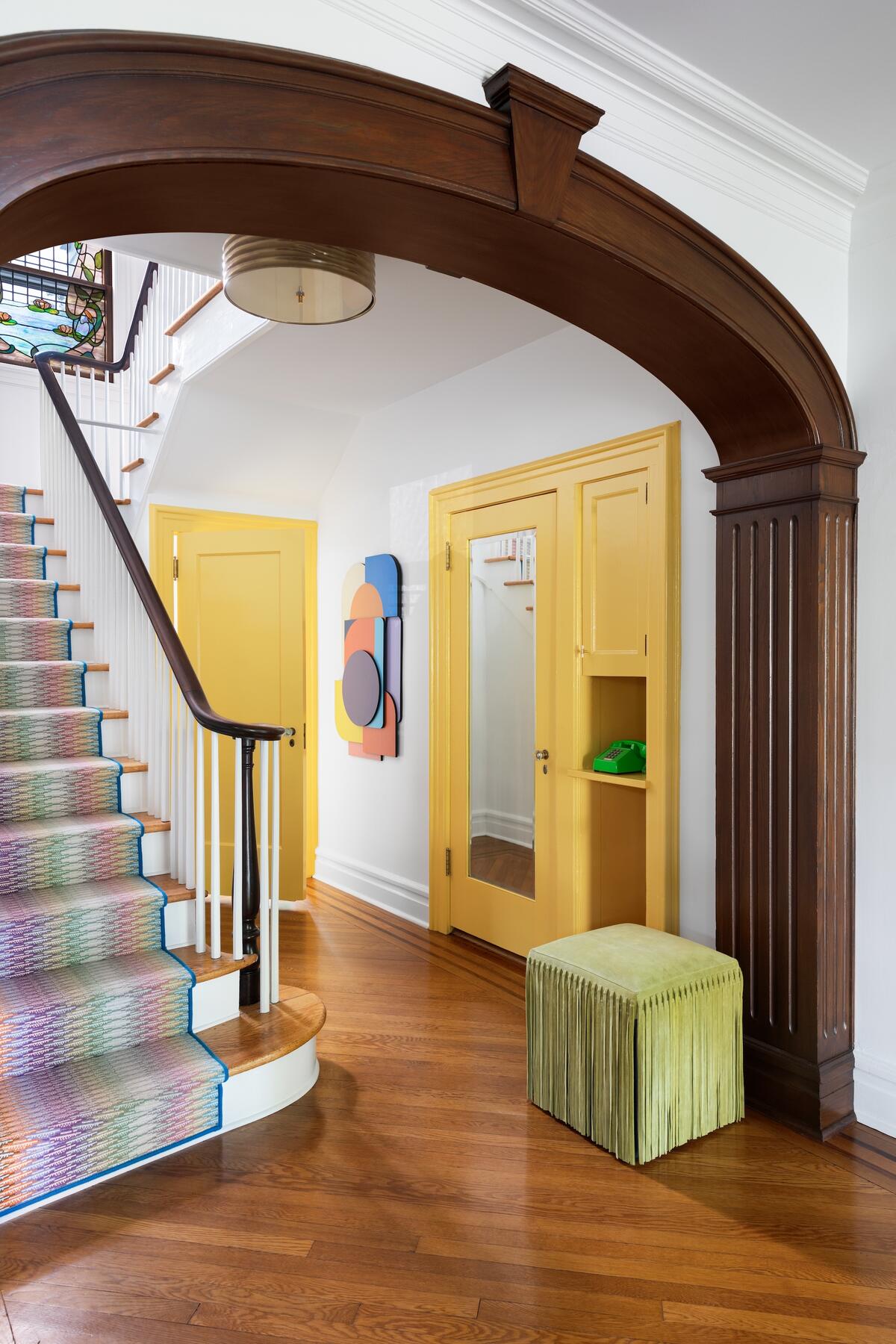
How have you approached billing for your work—especially when it comes to scope creep like the client who kept adding on rooms? Even if you welcome the additional work, how are you adjusting for that?
I’m terrible at billing hourly, so I’ve found that a flat fee works best for me. When I’m putting together a proposal, I analyze it in a couple of different ways: If this was hourly, I analyze what I think it would be. Then I look at the square footage of a space. I also have to keep in mind that my flat fee is for a full process—it’s the conceptual time, all of the procurement and sourcing, in-person meetings with the clients and tradespeople, and all of the operational aspects, like order placing, scheduling deliveries, and installation. After I meet with the client, I do basic measurements, take some pictures, and then put together an initial investment guide that outlines a range of costs for the room based on [its size] and the kind of furniture we need. I include an estimate for freight and white-glove delivery.
When I’m working on those [cost projections], the analogy that goes through my head is something I heard Sandra Funk say in one of her Design Sips videos: Everybody loves to drink the free champagne in first class [flights], but none of that champagne is free. You paid for it ahead of time with your first-class ticket because you want the experience of feeling like you’re being taken care of.
I also think the flat fee helps clients determine whether or not they can afford to work with you. If they know what the design fee and the investment is going to be, they’re either comfortable with it or they’re not—but they can decide before they get started. Especially if you’ve never worked with a designer before, the unknown aspect of the costs can feel very overwhelming, so I think my flat fee feels a little bit more approachable. And then if there’s additional scope, I treat it as another design fee based on what we’re doing.
The flat fee helps me budget too, to be quite honest, because I know approximately what the cash flow is going to look like.
What role does social media play in your business?
I’m always shocked when people say they find me on Instagram, because I have maybe 2,200 followers. Sure, I would love to have a bigger reach—from a partnership perspective, brands want huge audiences—but it’s really hard to grow organically on social media right now. I’ve decided to take the pressure off myself for that and instead look at my social media as being all about what I want to put out into the world. My grid has beautiful imagery, my thoughts on something, celebrations—right now, it’s flooded with Reels from [my participation in this year’s] Design on a Dime.
My Instagram Stories are snippets—I’m a little bit less serious there. I’ll sometimes put my kids in there, knowing that they’ll disappear, but I don’t put them on the grid. With Stories, I’m showing a little bit more personality. If someone stumbles on my profile, I want them to be able to look at my page and be like, “Oh, I think I would actually like to talk to her.” And then I try to treat everybody who’s commenting like we’re having a conversation.
What is the local New Jersey design community like?
It’s a very creative community, and there are a ton of interior designers here, but we’re all very different. I definitely know who I am as a designer: I am not a minimalist. I love color. I love textiles. I love layering so that it feels like you’ve been there forever. And I believe that you as a homeowner shouldn’t be the oldest thing in your house—you need some soul in there!
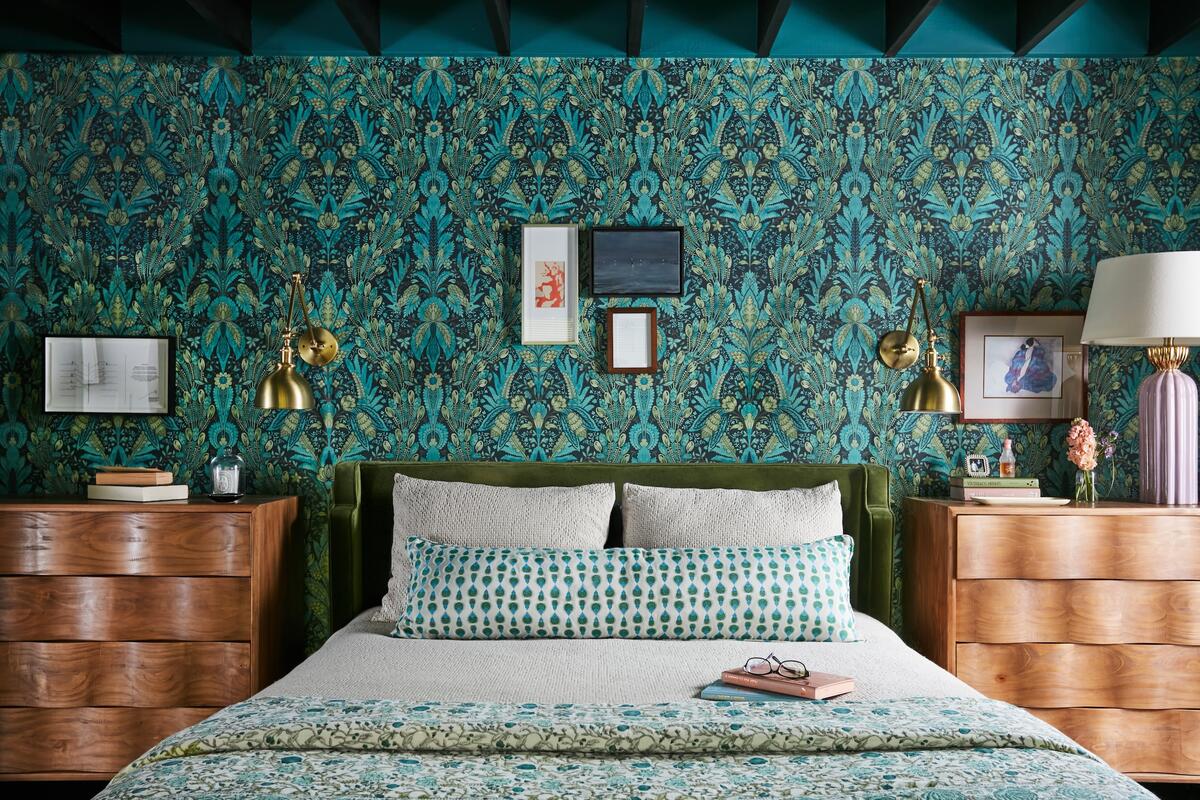
When you look back on the early days of your business, what do you know now that you wish you had known then?
It’s going to get better. Everything is a learning experience. Keep working through it. And trust your gut—if someone is showing you who they are and there are red flags, don’t be so desperate to [sign on] anyway, because it always backfires.
The lesson I’ve learned more recently—in the past six months, especially—is to trust your process. Don’t deviate, no matter who it is. There’s a reason you have a process, and your successful projects have been successful because of it, so don’t let someone else’s schedule dictate how you run your business. I’ve had a couple incidents where people are like, “We’re going away for vacation over this long weekend. Can’t you demo now?” I said no—we weren’t ready, so they were just going to come back to a demoed room and work wouldn’t start right away—but they insisted. Then that client is like, “This project has taken six months,” and I had to be like, “Well, that’s because we demoed too soon.”
Where do you see opportunity to grow? How do you envision the future of your firm?
I would like to have a smaller in-house team with two other design leads and two other operational people. I think I’ll always continue to outsource bookkeeping, and I would like to be doing homes all over. I like the idea of being able to use your environment to change your vision. I want the work to be a reflection of people’s journeys, with a little bit of my signature on the end of it, but I don’t want a signature look that can turn into a mass-market type brand. And I think from a dream perspective, I want licensing—I want fabric and lighting. Those are the two that I feel really passionate about.
What does success mean to you?
It’s a two-part answer: feeling like I get to wake up every day and do something that I love and build something that’s truly mine. The second part of it is how my little boys talk about the fact that their mom owns her business and she is a boss. They want to take over my company when they get older—one of my twins is very design-inclined, so I think he’ll be an architect or a designer of some sort, and the other one loves to build things and would be a good architect or general contractor. Knowing that I have these little people who are always proud of and looking up to me is a motivation to keep going—to know that all the hard work is for something. And if they end up wanting to take over when they’re older, that’s wonderful. If they don’t, that’s OK too. I just love the fact that I have this total cheerleader squad in the littlest members of my family. They looked at a presentation the other day and said, “We think this is the most beautiful thing you’ve designed yet.”
To learn more about Sarah Storms and Styled by Storms, visit her website or find her on Instagram.





























